A Comprehensive Evaluation of Machine Learning and Deep Learning Models for Churn Prediction
Abstract
1. Introduction
- Via this systematic evaluation, the study is the first to exhibit the accomplishments of Ensemble Learning across sectors (Insurance, ISPs, and Telecom) and the apparent generalizability of these techniques despite different churn patterns, as for instance, it better offers driving churn in Insurance and service coverage affecting churn in Telecom. This cross-sectoral study offers new insights pertaining to the adaptability of predictive models for application to different industrial contexts—a gap never filled before in the literature.
- We present the first direct comparison between Ensemble Deep Learning (integrating Deep Feature Extractor (DFE-CNN) and Lightweight Feature Extractor (LFE-CNN)) and Ensemble Machine Learning (XGBoost), offering a novel perspective on their relative strengths and weaknesses across datasets. This comparison highlights the superior generalization of Ensemble Deep Learning in complex datasets like Insurance (95.96% accuracy) and the efficiency of XGBoost in others like ISP (95.36% accuracy).
- The study introduces a novel Ensemble Deep Learning architecture by combining DFE-CNN and LFE-CNN, balancing predictive accuracy and computational efficiency. This innovative design achieves state of the art performance (e.g., 98.42% accuracy in Telecom) and sets a new benchmark for hybrid deep learning models in churn prediction.
- Our findings encourage organizations across sectors to adopt a single predictive paradigm with little customization, thereby reducing costs of development activity while improving their strategy to retain customers targeting actual intervention pros (e.g., discounts or promotion).
- By analyzing churn behaviors across sectors, the study uncovers new insights into how sector-specific factors influence model effectiveness, contributing to a deeper understanding of customer behavior dynamics in churn prediction.
2. Literature Review
2.1. Churn Prediction in Telecommunications
2.2. Churn Prediction in Human Resources
2.3. Churn Prediction in E-Commerce
2.4. Hybrid and Advanced Techniques
3. The Proposed Methodology
3.1. Datasets
3.1.1. Selection Criteria for Datasets
3.1.2. Insurance Churn Prediction Dataset
3.1.3. Internet Service Provider Customer Churn Dataset
3.1.4. Telecom Churn Dataset
3.2. Exploratory Data Analysis
3.3. Preprocessing and Data Handling
3.4. Limitations and Considerations
3.5. XGBoost Machine Learning Model
3.6. The Proposed CNN Model
3.7. Ensemble Deep Learning
4. Results and Discussion
4.1. Setup
4.2. Results
| Reference | Methodology | Training Accuracy (%) | Testing Accuracy (%) | F1-Score (%) |
|---|---|---|---|---|
| Insurance Churn Dataset | ||||
| [38] | Ensemble Learning, Logistic Regression | - | 79.00 | 70.00 |
| [29] | SVM-POLY using AdaBoost | - | 97.00 | 84.00 |
| Our study | Ensemble Deep Learning | 98.25 | 95.96 | 95.95 |
| Internet Service Provider Customer Churn Dataset | ||||
| [39] | ANN-5 model | - | 88.90 | 89.30 |
| [40] | XGBoost | - | 60.00 | 43.56 |
| [41] | XGBoost | - | 96.00 | 74.00 |
| Our study | XGBoost | 96.52 | 95.36 | 95.33 |
| Telecom Churn Dataset | ||||
| [37] | Logistic Regression | - | 78.70 | 69.00 |
| Our study | CNN | 99.90 | 98.42 | 98.42 |
4.3. Discussion
5. Explainable AI (XAI) and Model Interpretability
5.1. SHAP Analysis Methodology
5.2. Interpretation of Results
5.2.1. Insurance Churn Dataset
5.2.2. Internet Service Provider Dataset
5.2.3. Telecom Churn Dataset
- Insurance: Policy-related features dominate
- ISP: Service quality and billing factors are primary
- Telecom: Customer service interactions are most predictive
6. Conclusions
Author Contributions
Funding
Institutional Review Board Statement
Informed Consent Statement
Data Availability Statement
Conflicts of Interest
References
- Neslin, S.A.; Gupta, S.; Kamakura, W.; Lu, J.; Mason, C.H. Defection Detection: Measuring and Understanding the Predictive Accuracy of Customer Churn Models. J. Mark. Res. 2006, 43, 204–211. [Google Scholar] [CrossRef]
- Suh, Y. Machine learning based customer churn prediction in home appliance rental business. J. Big Data 2023, 10, 41. [Google Scholar] [CrossRef] [PubMed]
- Raj, A.; Vetrithangam, D. Machine Learning and Deep Learning technique used in Customer Churn Prediction—A Review. In Proceedings of the 2023 International Conference on Computational Intelligence and Sustainable Engineering Solutions (CISES), Greater Noida, India, 28–30 April 2023; pp. 139–144. [Google Scholar] [CrossRef]
- Chang, V.; Hall, K.; Xu, Q.A.; Amao, F.O.; Ganatra, M.A.; Benson, V. Prediction of Customer Churn Behavior in the Telecommunication Industry Using Machine Learning Models. Algorithms 2024, 17, 231. [Google Scholar] [CrossRef]
- Tan, C. Enhancing telecom customer retention using hybrid deep learning models. IEEE Access 2023, 11, 15902–15915. [Google Scholar]
- Liu, X.; Xia, G.; Zhang, X.; Yu, C. Customer churn prediction model based on hybrid neural networks. Sci. Rep. 2024, 14, 30707. [Google Scholar] [CrossRef]
- Pan, L.; Wang, X. Transformer-based churn prediction model with feature attention mechanism. Knowl. Based Syst. 2023, 282, 110431. [Google Scholar]
- Khattak, A.; Mehak, Z.; Ahmad, H.; Asghar, M.U.; Asghar, M.Z.; Khan, A. Customer churn prediction using composite deep learning technique. Sci. Rep. 2023, 13, 17294. [Google Scholar] [CrossRef]
- Akbar, T.A.R.; Apriono, C. Machine Learning Predictive Models Analysis on Telecommunications Service Churn Rate. Green Intell. Syst. Appl. 2023, 3, 22–34. [Google Scholar] [CrossRef]
- Basit, J.; Sheikh, A.; Umer, N.; Syed, M. Comparative Analysis of Deep Learning Architectures for Customer Churn Prediction in Banking. J. Comput. Intell. Syst. 2024, 3, 16–30. [Google Scholar]
- Joy, U.G.; Hoque, K.E.; Uddin, M.N.; Chowdhury, L.; Park, S.B. A Big Data-Driven Hybrid Model for Enhancing Streaming Service Customer Retention Through Churn Prediction Integrated with Explainable AI. IEEE Access 2024, 12, 69130–69150. [Google Scholar] [CrossRef]
- Shobana, J.; Gangadhar, C.; Arora, R.K.; Renjith, P.N.; Bamini, J.; Chincholkar, Y.D. E-commerce customer churn prevention using machine learning-based business intelligence strategy. Meas. Sens. 2023, 27, 100728. [Google Scholar] [CrossRef]
- Pono, J. Predicting Customer Churn in Travel and Tour Industry Using Machine Learning Algorithm Approaches. Bus. Organ. Stud. E J. 2023, 1, 102–118. [Google Scholar]
- Ramanayake, C.; Liyanage, D.; Dhananjaya, P.; Kumara, C.; Fernando, T.G.I. Telco Customer Churn Prediction Using Composite Deep Learning Technique. In Proceedings of the 2024 6th International Conference on Advancements in Computing (ICAC), Colombo, Sri Lanka, 12–13 December 2024; pp. 402–407. [Google Scholar] [CrossRef]
- Wang, H. Attention-based transformer models for customer churn prediction. IEEE Trans. Neural Netw. 2023, 34, 2461–2473. [Google Scholar]
- Ljubičić, K.; Merćep, A.; Kostanjčar, Z. Churn prediction methods based on mutual customer interdependence. J. Comput. Sci. 2023, 67, 101940. [Google Scholar] [CrossRef]
- Owolabi, O.S.; Uche, P.C.; Adeniken, N.T.; Efijemue, O.; Attakorah, S.; Emi-Johnson, O.G.; Hinneh, E. Comparative Analysis of Machine Learning Models for Customer Churn Prediction in the U.S. Banking and Financial Services: Economic Impact and Industry-Specific Insights. J. Data Anal. Inf. Process. 2024, 12, 388–418. [Google Scholar] [CrossRef]
- Keramati, A.; Jafari-Marandi, R.; Aliannejadi, M.; Ahmadian, I.; Mozaffari, M.; Abbasi, U. Improved Churn Prediction in Telecommunication Industry Using Data Mining Techniques. Appl. Soft Comput. 2014, 24, 994–1012. [Google Scholar] [CrossRef]
- Umayaparvathi, V.; Iyakutti, K. Attribute Selection and Customer Churn Prediction in Telecom Industry. Procedia Comput. Sci. 2016, 85, 241–247. [Google Scholar]
- Jain, H.; Khunteta, A.; Srivastava, S. Churn Prediction in Telecommunication Using Logistic Regression and Logit Boost. Procedia Comput. Sci. 2020, 167, 101–112. [Google Scholar] [CrossRef]
- Saradhi, V.V.; Palshikar, G.K. Employee Churn Prediction. Expert Syst. Appl. 2011, 38, 1999–2006. [Google Scholar] [CrossRef]
- Karande, S.; Shyamala, L. Prediction of Employee Turnover Using Ensemble Learning. In Ambient Communications and Computer Systems; Advances in Intelligent Systems and Computing; Hu, Y.C., Tiwari, S., Mishra, K., Trivedi, M., Eds.; Springer: Singapore, 2019; Volume 904. [Google Scholar] [CrossRef]
- Shafie, M.R.; Khosravi, H.; Farhadpour, S.; Das, S.; Ahmed, I. A cluster-based human resources analytics for predicting employee turnover using optimized Artificial Neural Networks and data augmentation. Decis. Anal. J. 2024, 11, 100461. [Google Scholar] [CrossRef]
- Zhang, X.; Guo, F.; Chen, T.; Pan, L.; Beliakov, G.; Wu, J. A Brief Survey of Machine Learning and Deep Learning Techniques for E-Commerce Research. J. Theor. Appl. Electron. Commer. Res. 2023, 18, 2188–2216. [Google Scholar] [CrossRef]
- Anudeep, C.; Venugopal, R.; Aarif, M.; Thiruma Valavan, A.; Vuyyuru, V.A.; Muthuperumal, S. Predicting Customer Churn in E-commerce Subscription Services using RNN with Attention Mechanisms. In Proceedings of the 15th International Conference on Computing Communication and Networking Technologies (ICCCNT), Kamand, India, 24–28 June 2024; pp. 1–6. [Google Scholar] [CrossRef]
- Matuszelański, K.; Kopczewska, K. Customer Churn in Retail E-Commerce Business: Spatial and Machine Learning Approach. J. Theor. Appl. Electron. Commer. Res. 2022, 17, 165–198. [Google Scholar] [CrossRef]
- Sabbeh, S.F. Machine-Learning Techniques for Customer Retention: A Comparative Study. Int. J. Adv. Comput. Sci. Appl. 2018, 9, 273–281. [Google Scholar]
- Faris, H.; Al-Zoubi, A.M.; Mirjalili, S. A Hybrid Swarm Intelligence Neural Network Model for Customer Churn Prediction. Int. J. Adv. Comput. Sci. Appl. 2018, 9, 1–8. [Google Scholar]
- Vafeiadis, T.; Diamantaras, K.; Sarigiannidis, G.; Chatzisavvas, K. A comparison of machine learning techniques for customer churn prediction. Simul. Model. Pract. Theory 2015, 55, 1–9. [Google Scholar] [CrossRef]
- Insurance Churn Data. Available online: https://www.kaggle.com/datasets/mukulsingh/insurance-churn-prediction (accessed on 1 May 2025).
- Internet Service Data. Available online: https://www.kaggle.com/datasets/mehmetsabrikunt/internet-service-churn (accessed on 1 May 2025).
- Telecom Data. Available online: https://www.kaggle.com/datasets/mnassrib/telecom-churn-datasets (accessed on 1 May 2025).
- Ogunleye, A.; Wang, Q.G. XGBoost Model for Chronic Kidney Disease Diagnosis. IEEE/ACM Trans. Comput. Biol. Bioinform. 2020, 17, 2131–2140. [Google Scholar] [CrossRef]
- Li, H.; Cao, Y.; Li, S.; Zhao, J.; Sun, Y. XGBoost Model and Its Application to Personal Credit Evaluation. IEEE Intell. Syst. 2020, 35, 52–61. [Google Scholar] [CrossRef]
- Kattenborn, T.; Leitloff, J.; Schiefer, F.; Hinz, S. Review on Convolutional Neural Networks (CNN) in Vegetation Remote Sensing. ISPRS J. Photogramm. Remote Sens. 2021, 173, 24–49. [Google Scholar] [CrossRef]
- Chennamsetty, S.S.; Safwan, M.; Alex, V. Classification of Breast Cancer Histology Image Using Ensemble of Pre-trained Neural Networks. In Image Analysis and Recognition, Proceedings of the 15th International Conference, ICIAR 2018, Póvoa de Varzim, Portugal, 27–29 June 2018; Lecture Notes in Computer Science; Campilho, A., Karray, F., ter Haar Romeny, B., Eds.; Springer: Cham, Switzerland, 2018; Volume 10882, pp. 897–904. [Google Scholar] [CrossRef]
- Aggarwal, P.; Vijayakumar, V. Customer churn prediction in the telecom sector. In Proceedings of the 2024 3rd International Conference on Artificial Intelligence For Internet of Things (AIIoT), Vellore, India, 3–4 May 2024; pp. 1–6. [Google Scholar] [CrossRef]
- Nagaraju, J.; Sathwik, A.S.; Saiteja, B.; Challa, N.P.; Naseeba, B. Predicting Customer Churn in Insurance Industry Using Big Data and Machine Learning. In Proceedings of the 2023 First International Conference on Advances in Electrical, Electronics and Computational Intelligence (ICAEECI), Tiruchengode, India, 19–20 October 2023; pp. 1–8. [Google Scholar] [CrossRef]
- Scriney, M.; Nie, D.; Roantree, M. Predicting customer churn for insurance data. In Big Data Analytics and Knowledge Discovery, Proceedings of the 22nd International Conference, DaWaK 2020, Bratislava, Slovakia, 14–17 September 2020; Lecture Notes in Computer Science; Song, M., Song, I., Kotsis, G., Tjoa, A., Khalil, I., Eds.; Springer: Cham, Switzerland, 2020; Volume 12393, pp. 297–304. [Google Scholar] [CrossRef]
- Do, D.; Huynh, P.; Vo, P.; Vu, T. Customer churn prediction in an internet service provider. In Proceedings of the 2017 IEEE International Conference on Big Data (Big Data), Boston, MA, USA, 11–14 December 2017; pp. 3928–3933. [Google Scholar] [CrossRef]
- Alteer, S.A.; Alariyibi, A. Customer churn prediction using machine learning: A case study of Libyan internet service provider company. In Proceedings of the 2024 IEEE 4th International Maghreb Meeting of the Conference on Sciences and Techniques of Automatic Control and Computer Engineering (MI-STA), Tripoli, Libya, 19–21 May 2024; pp. 605–612. [Google Scholar] [CrossRef]
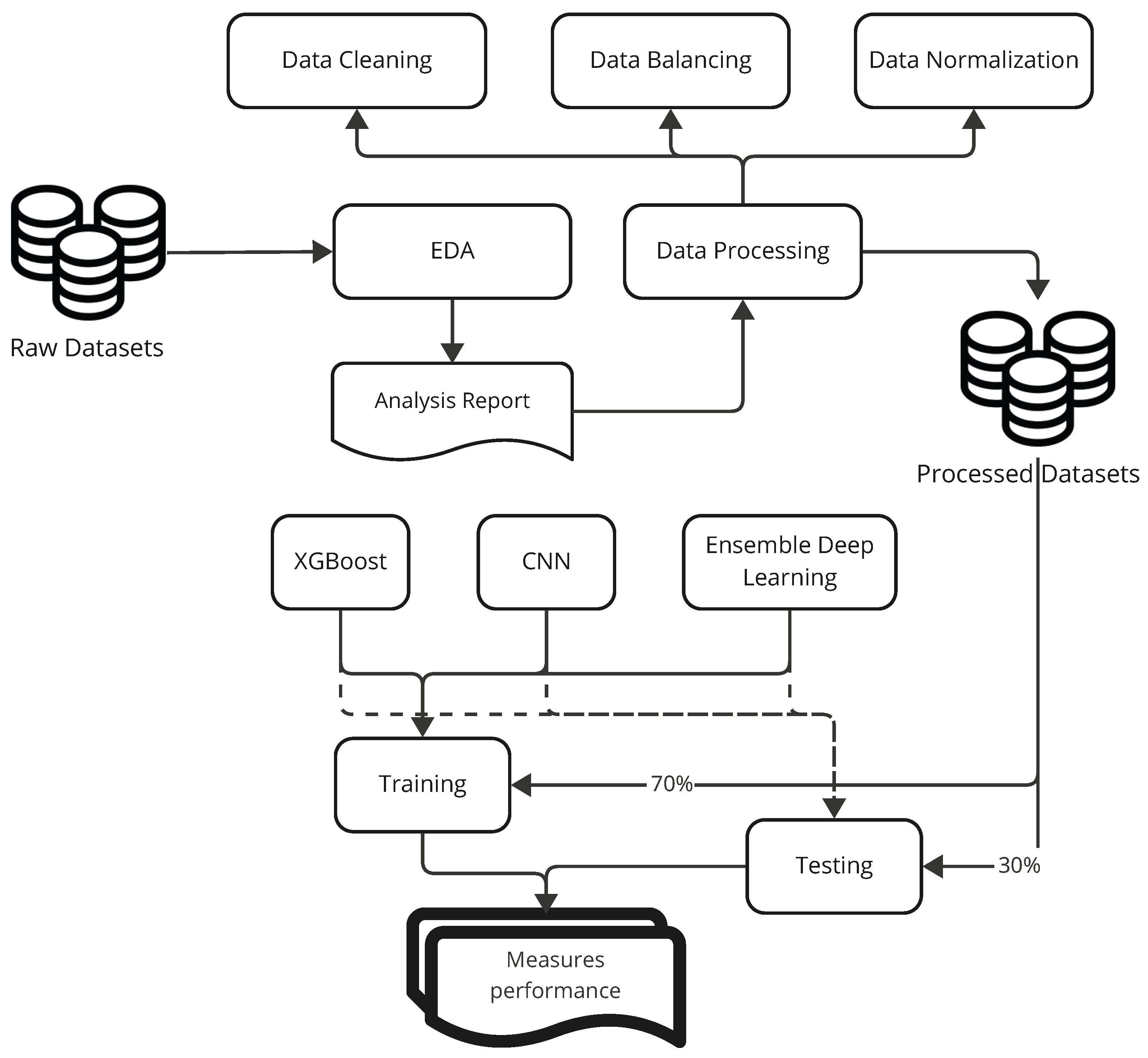
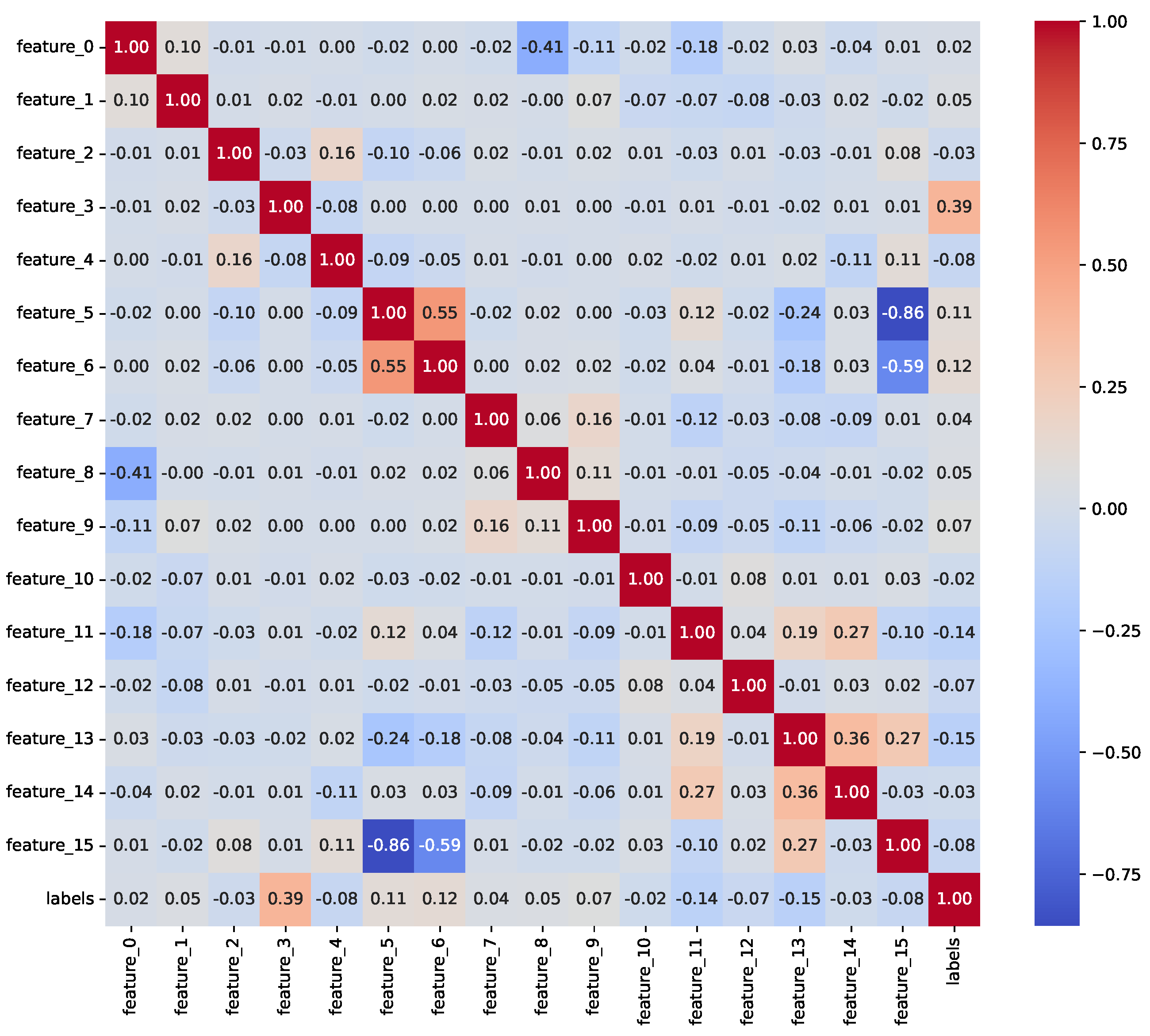
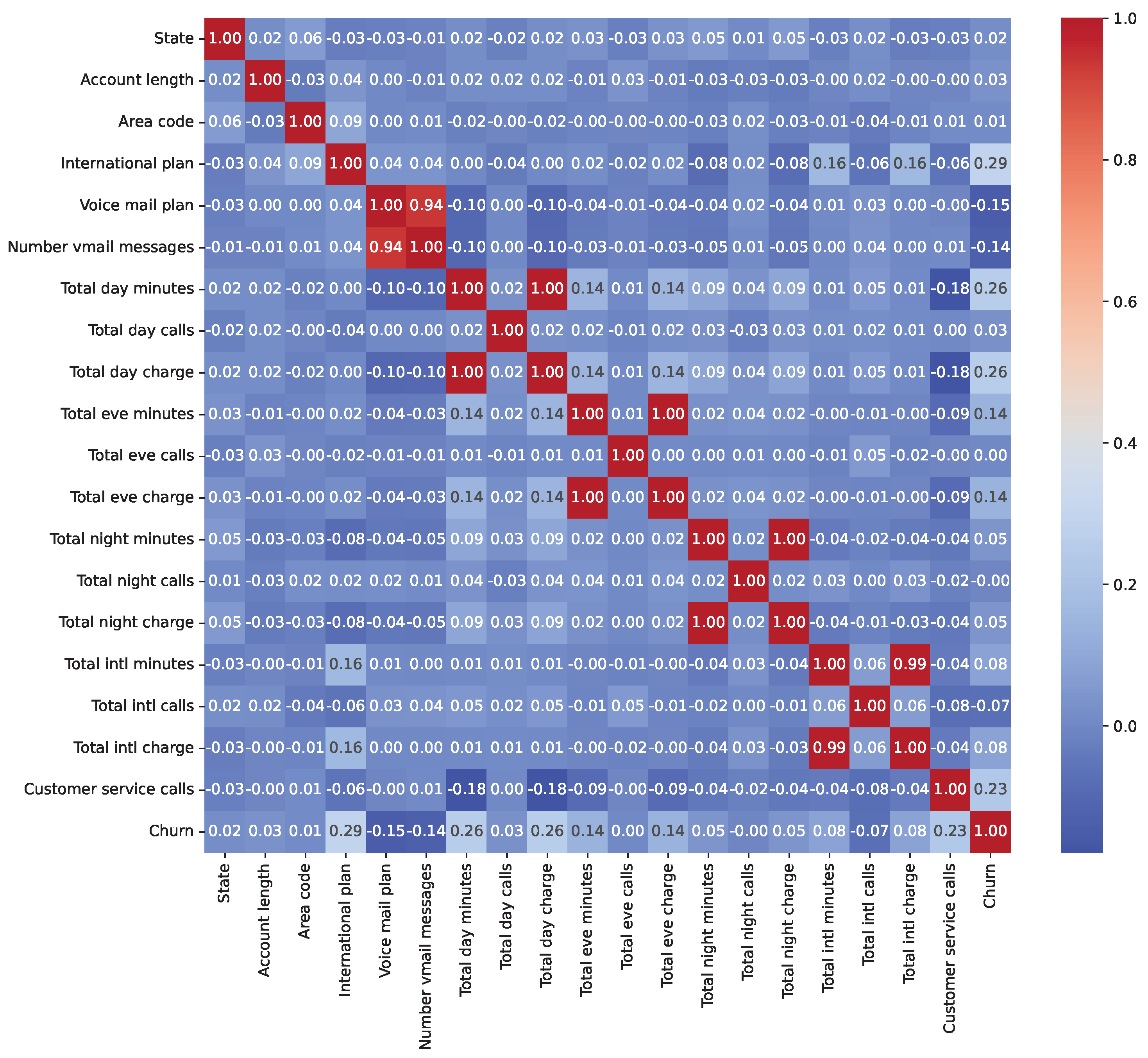
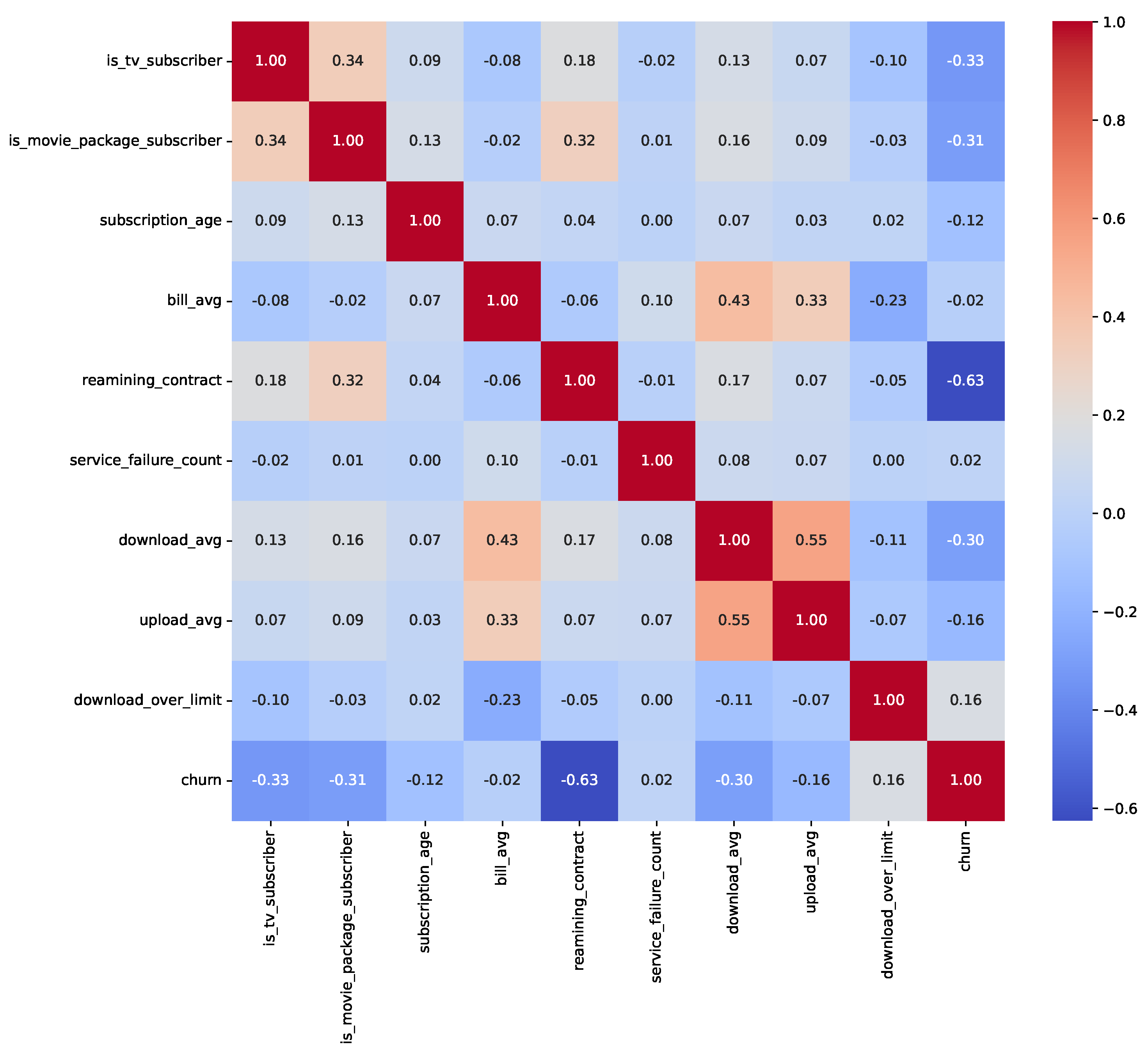
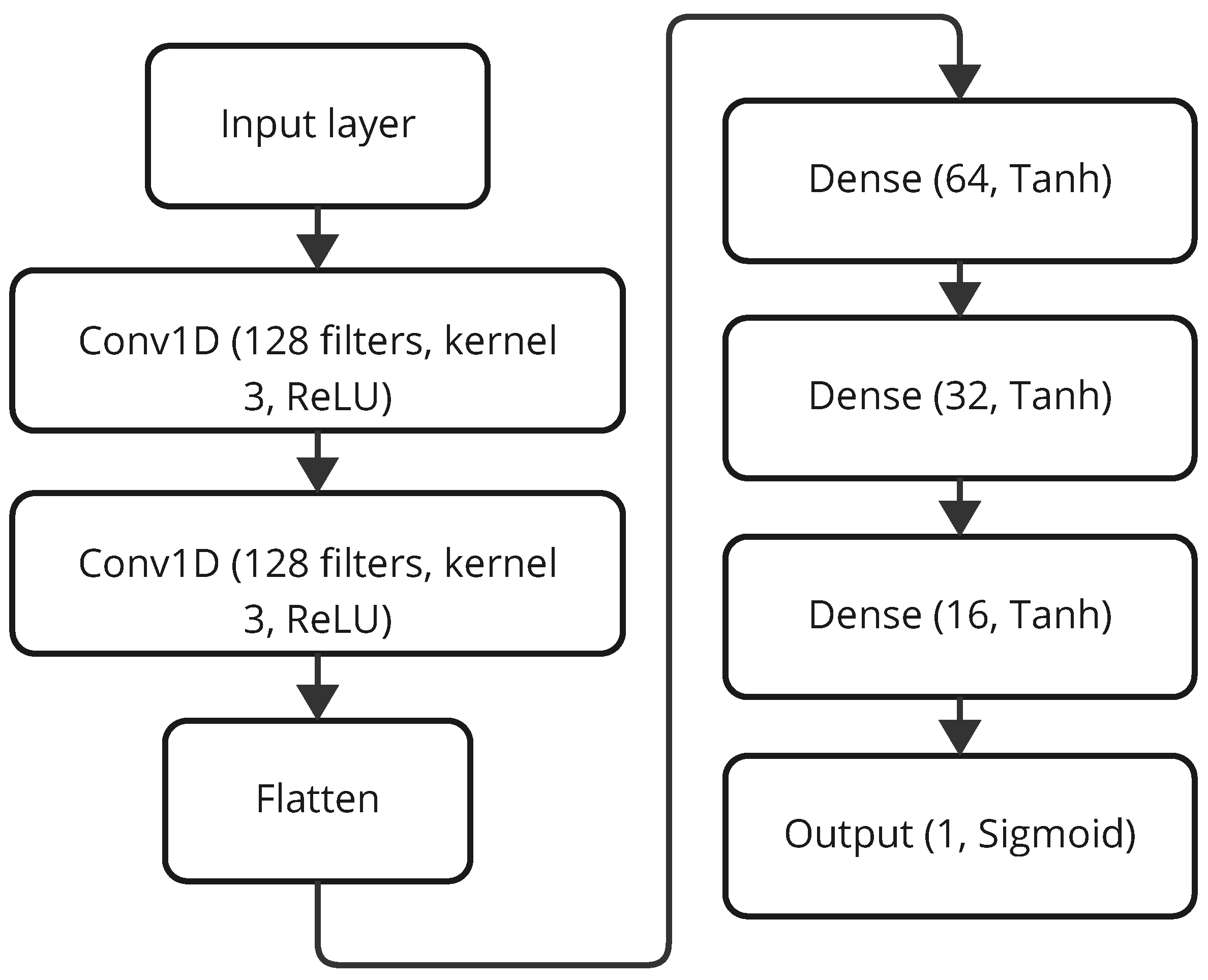
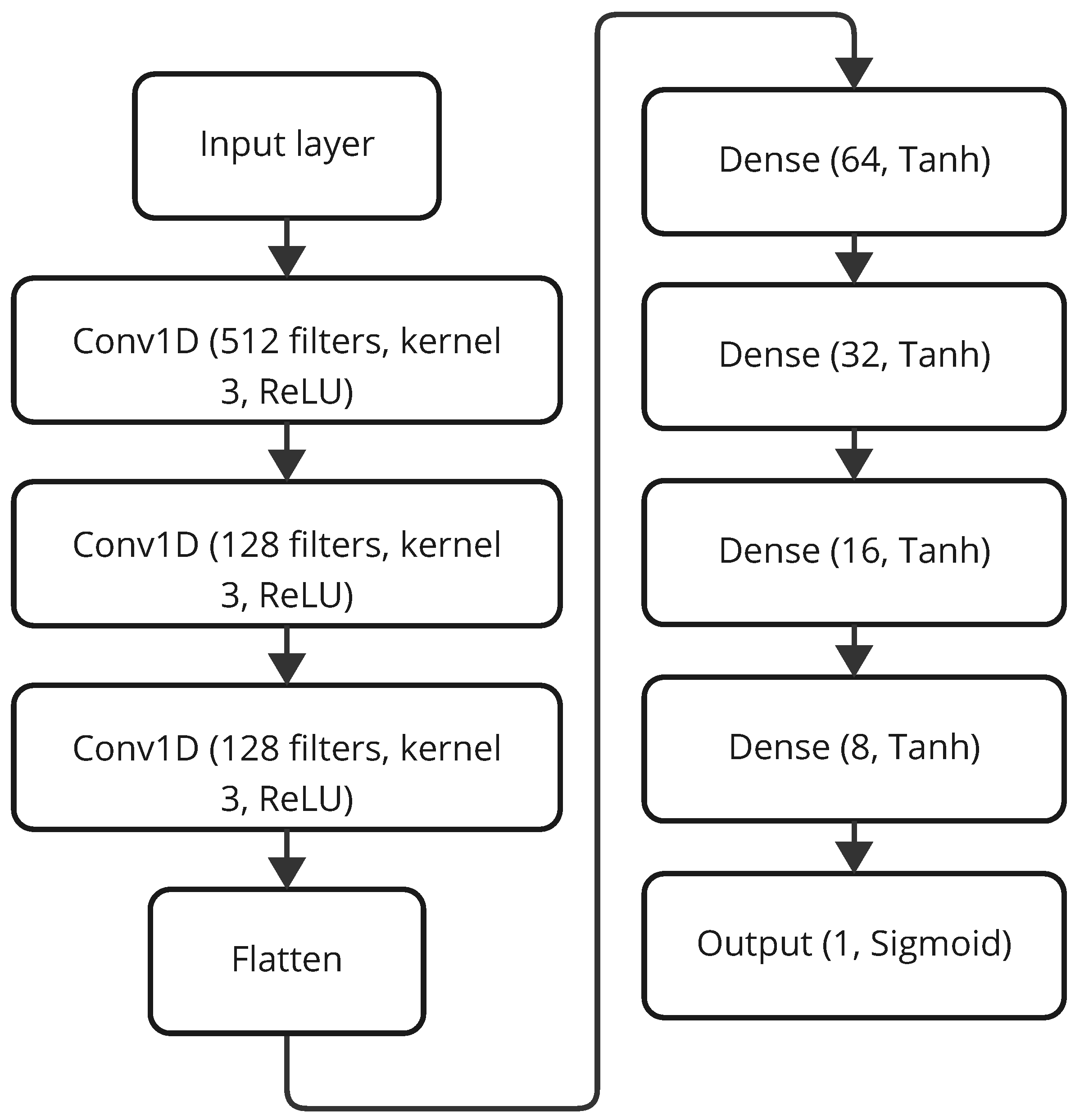







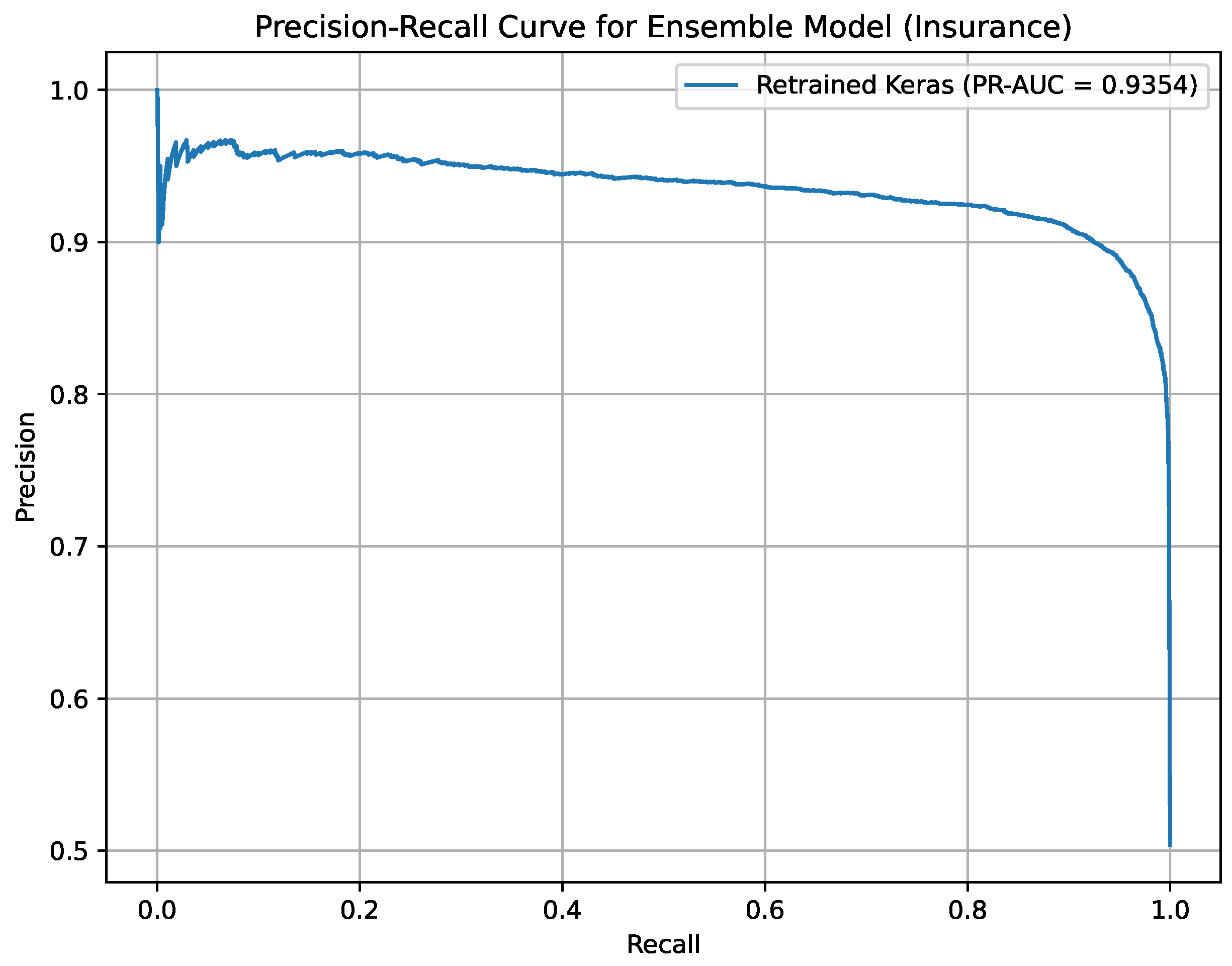
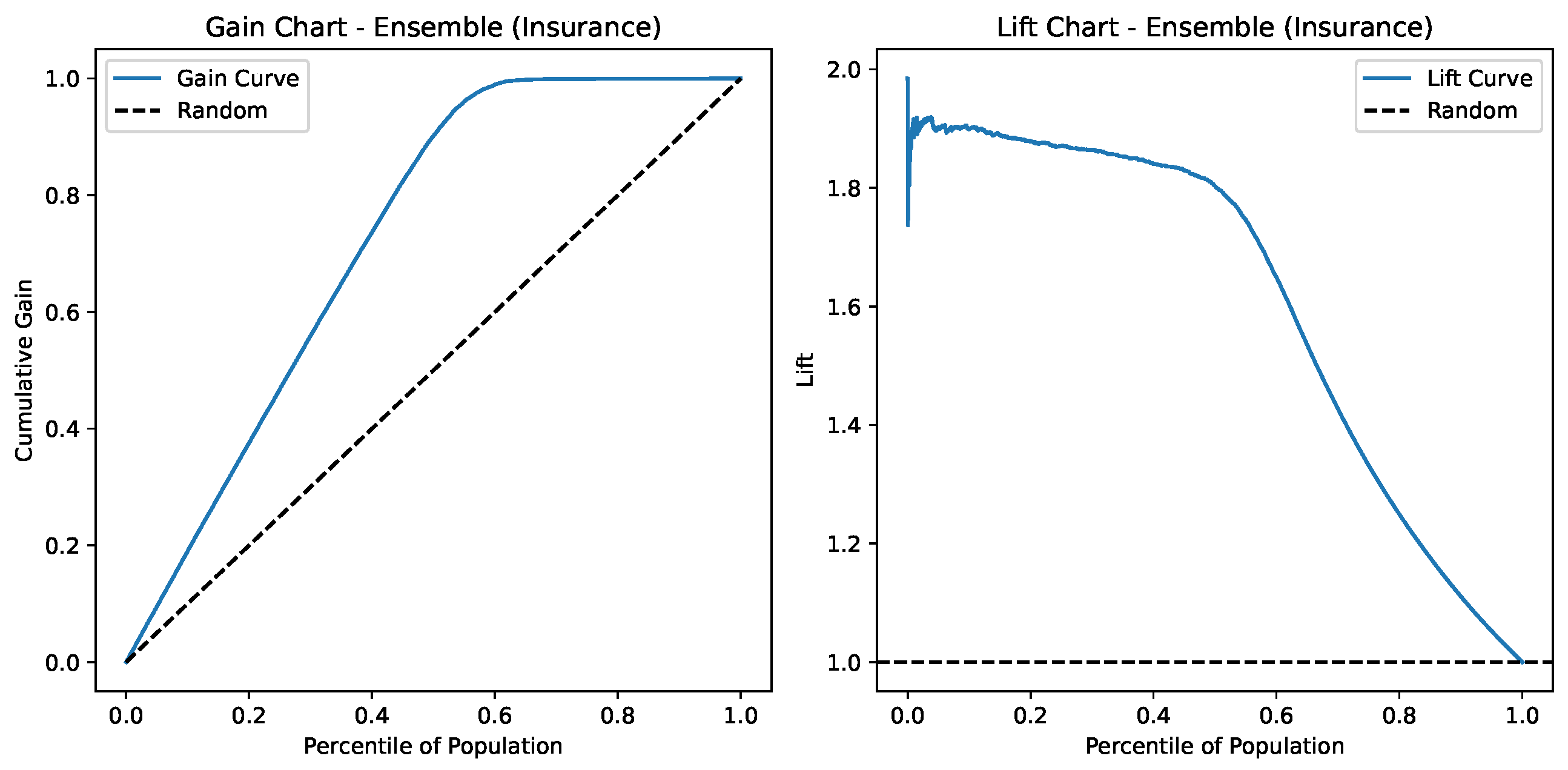
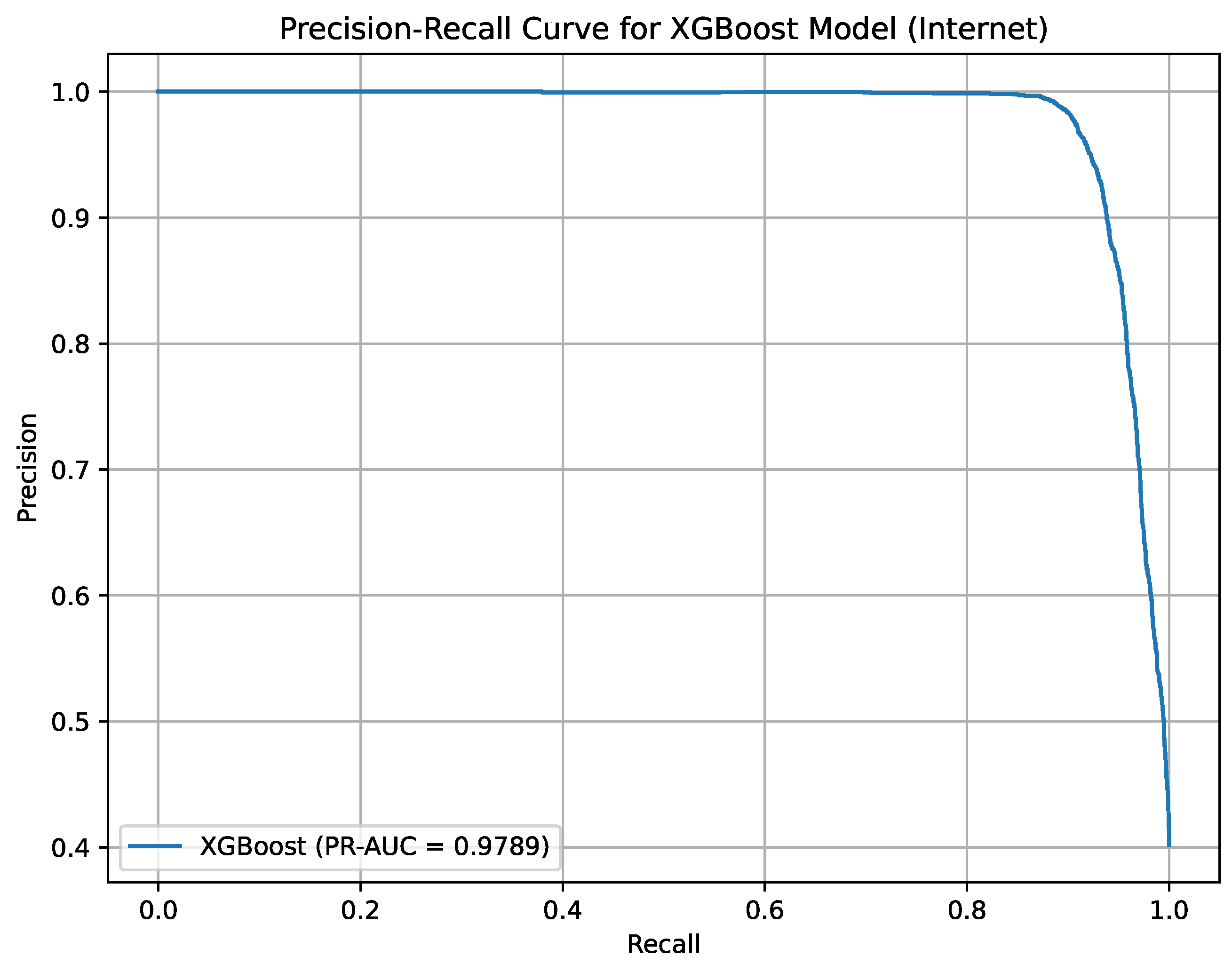
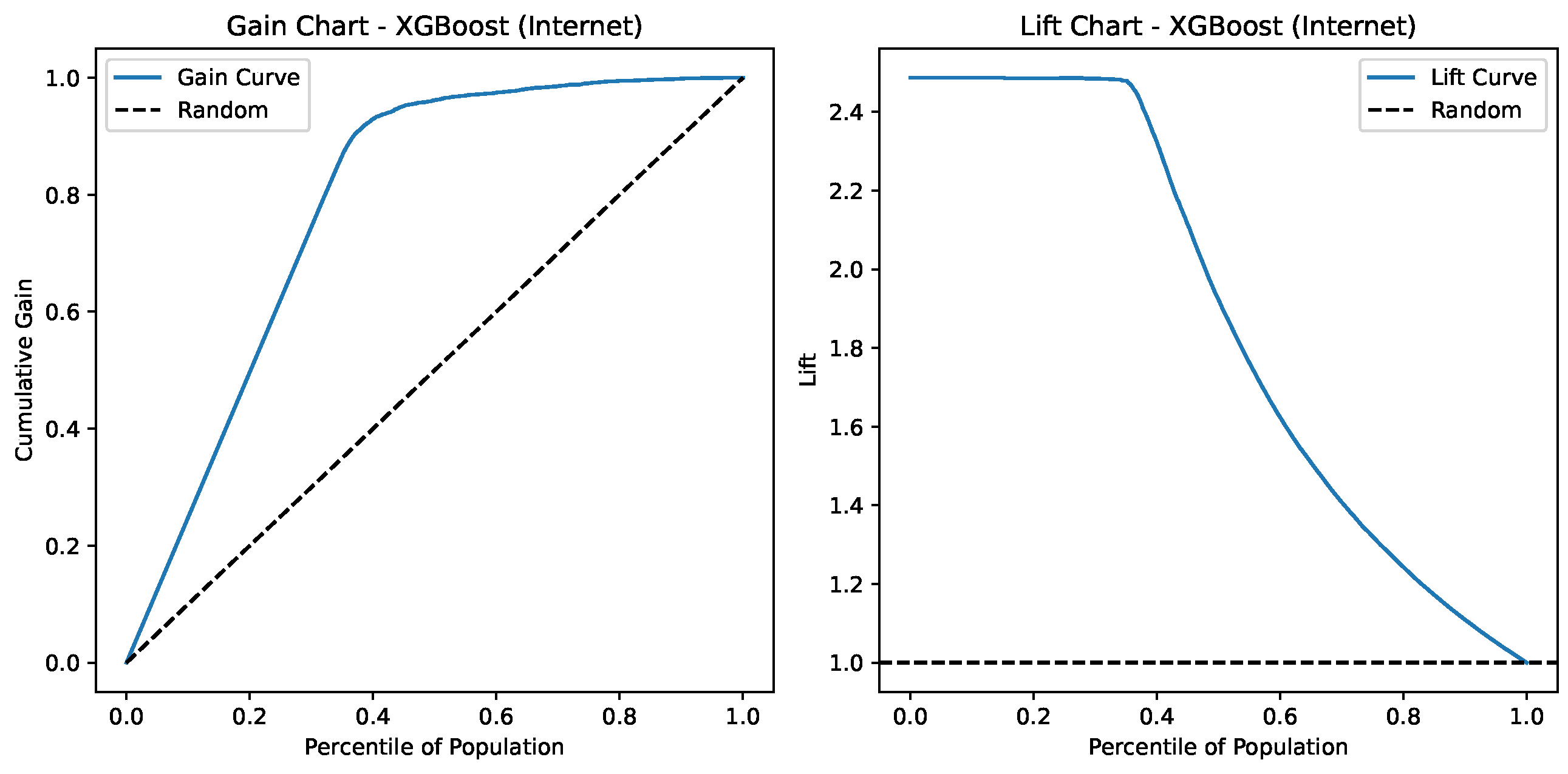
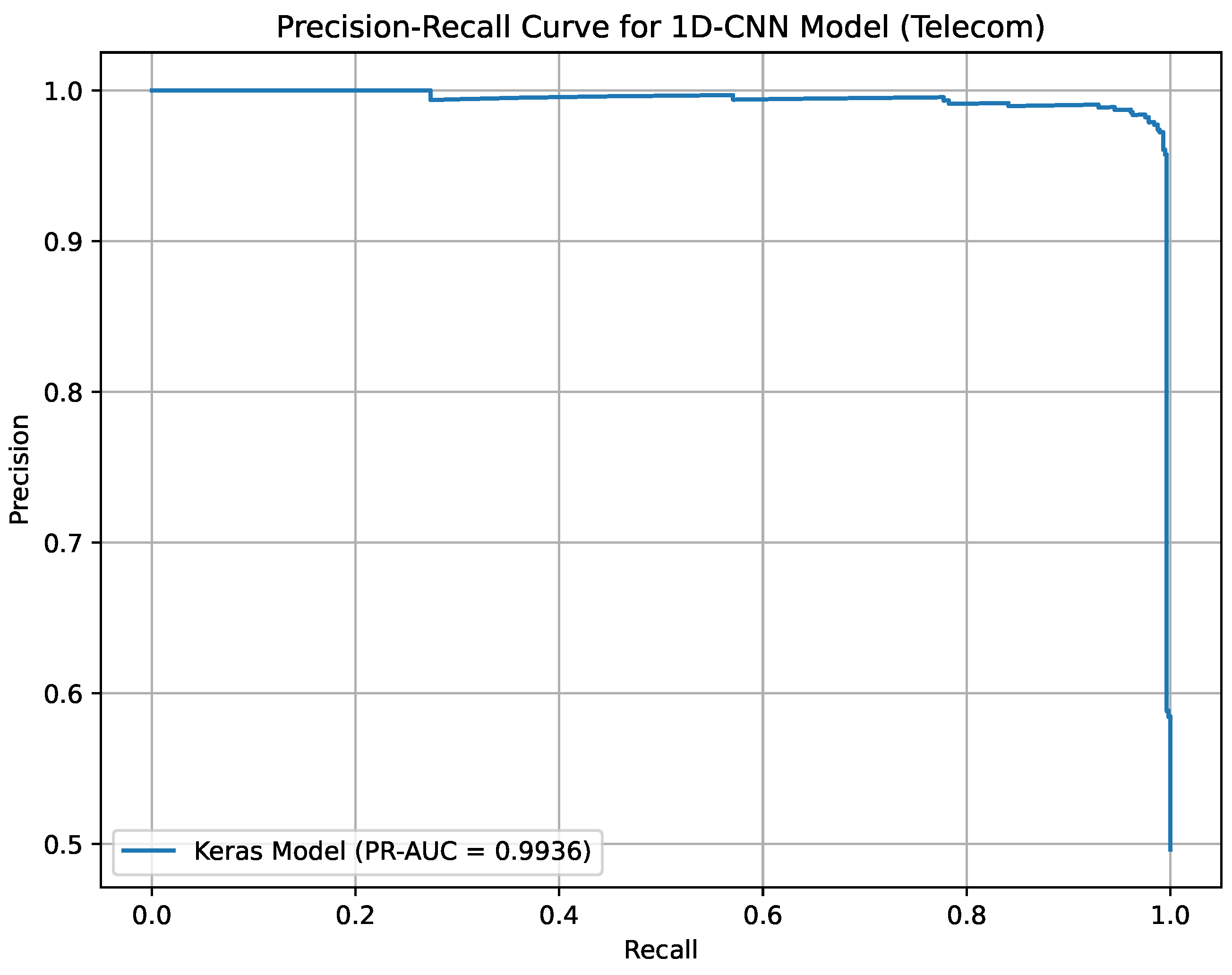
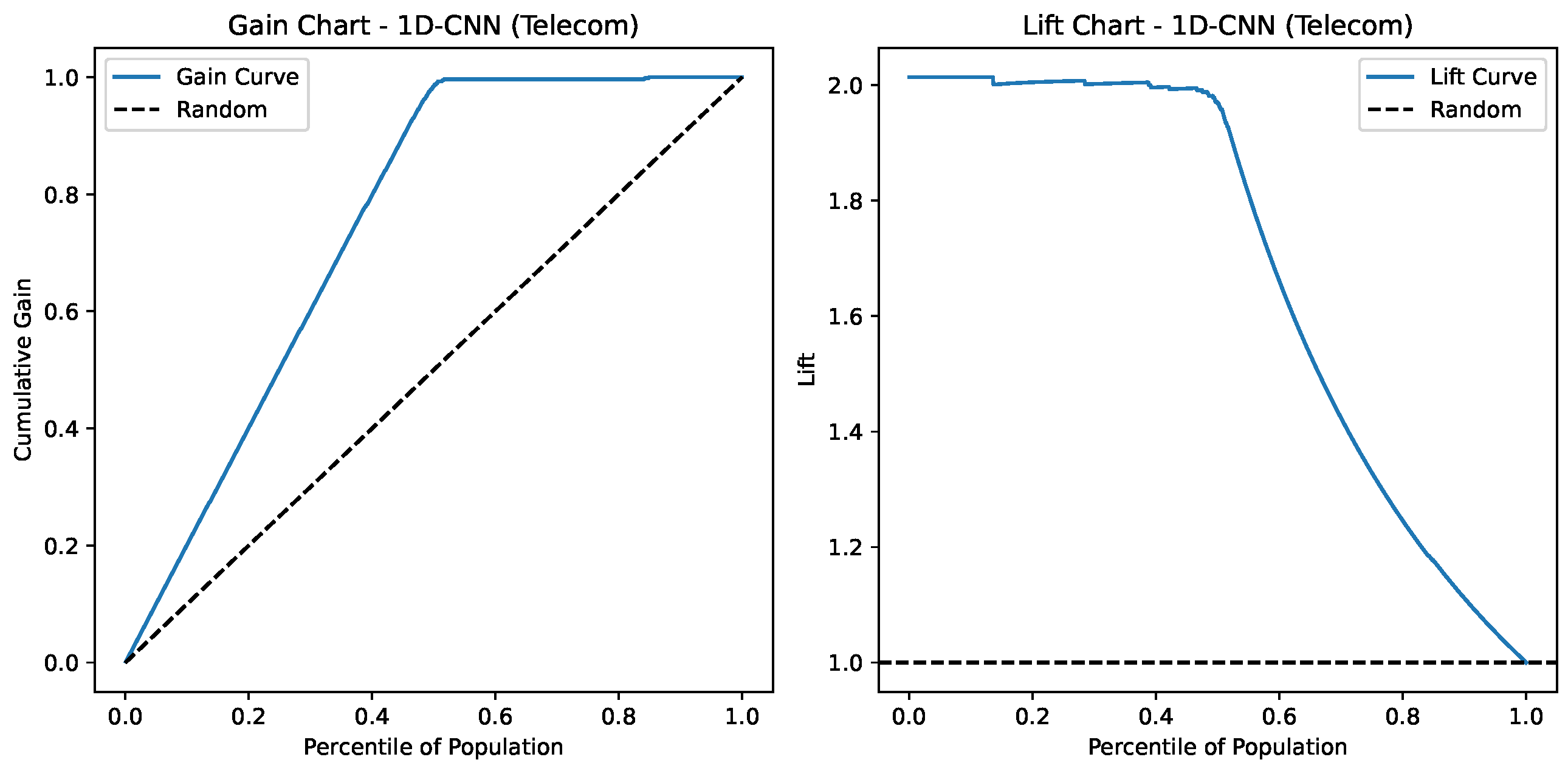
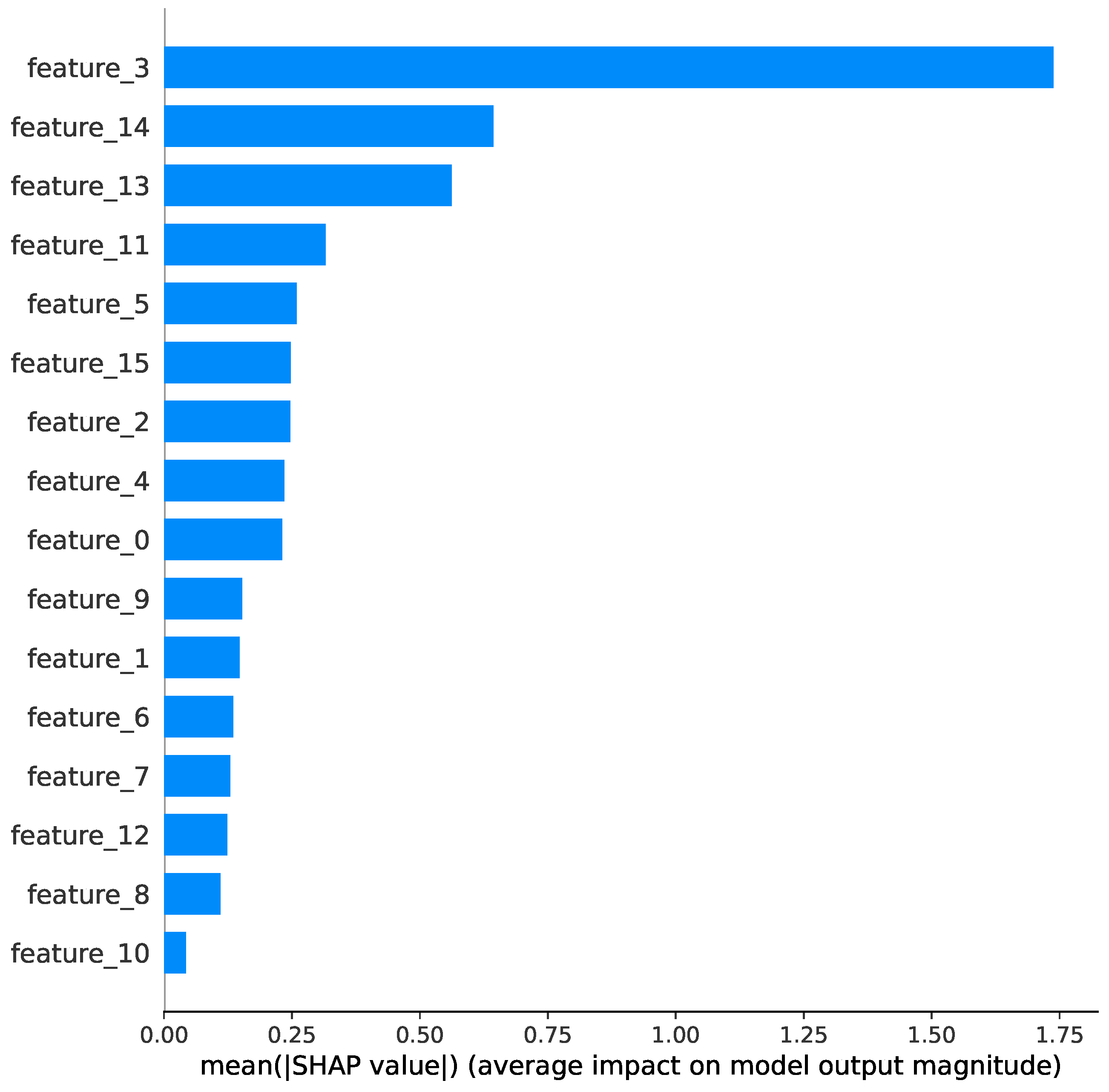
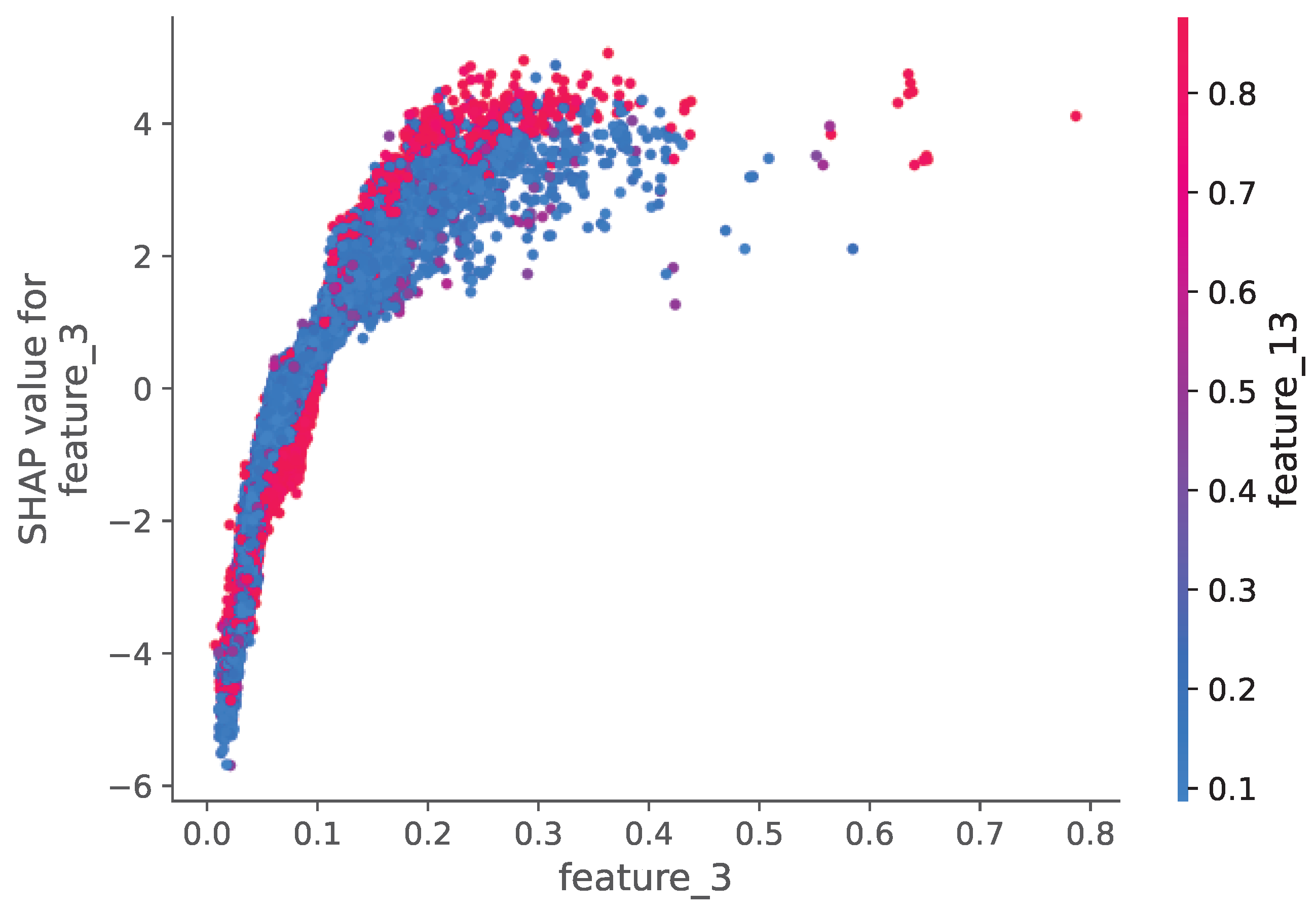

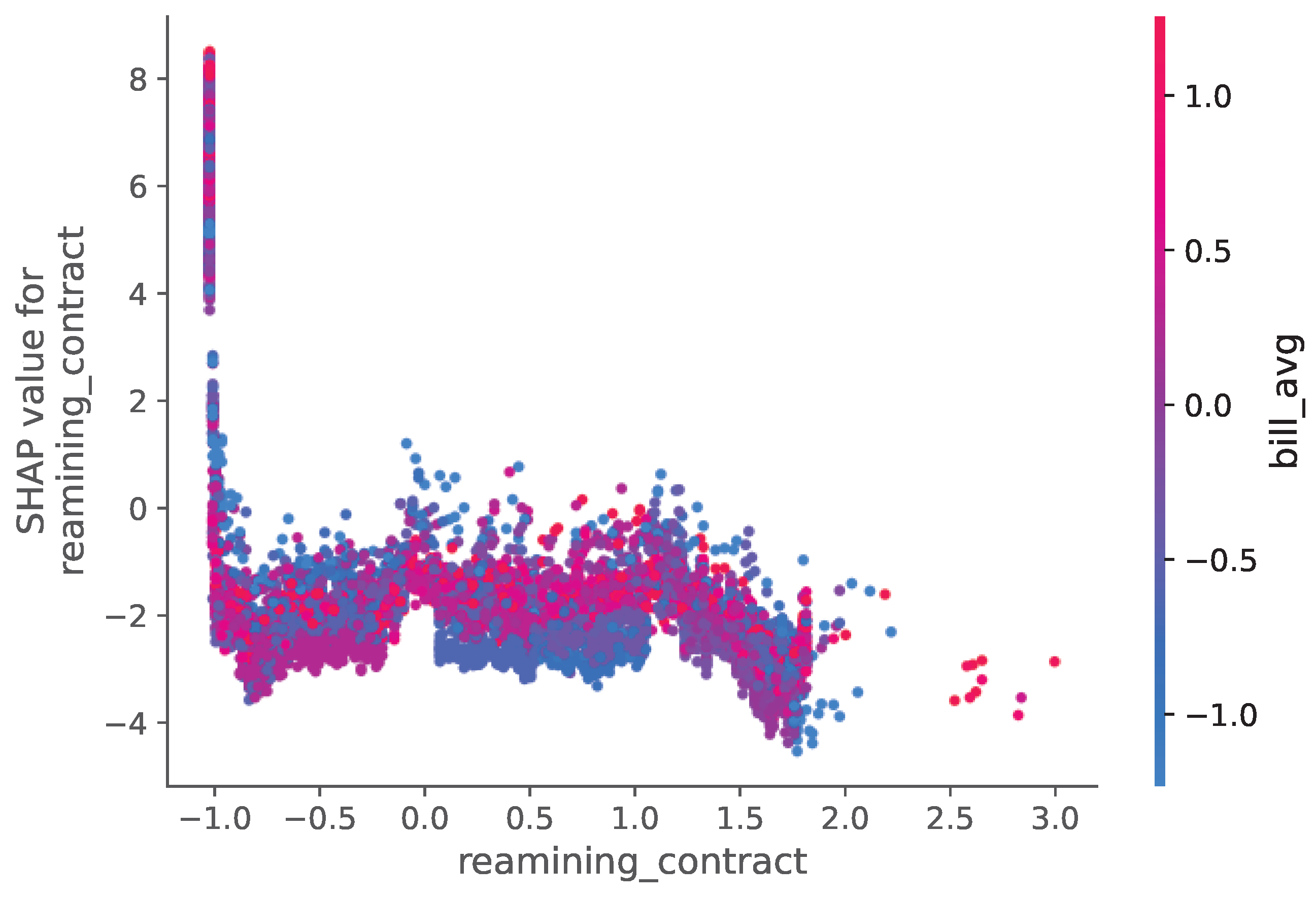
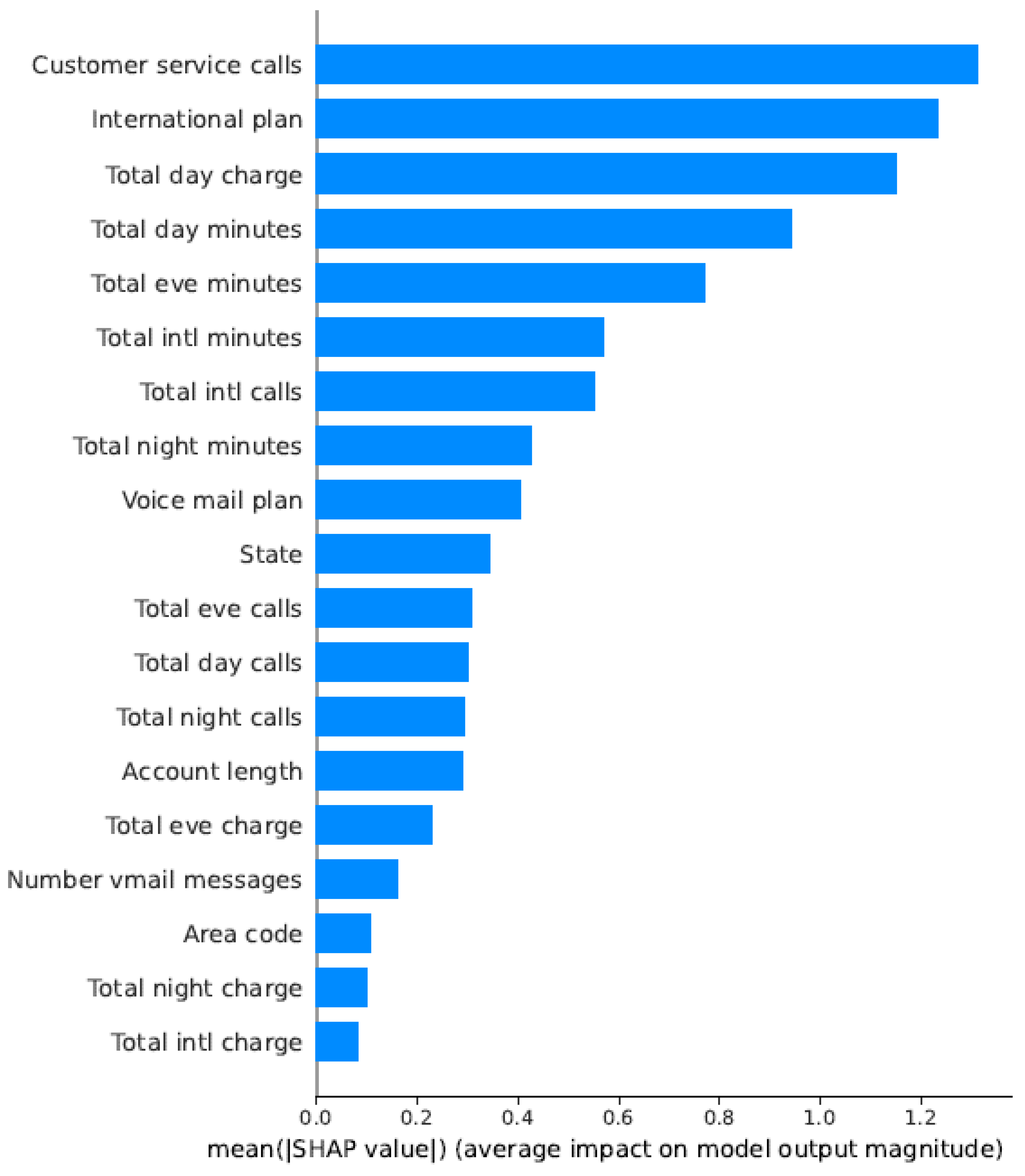
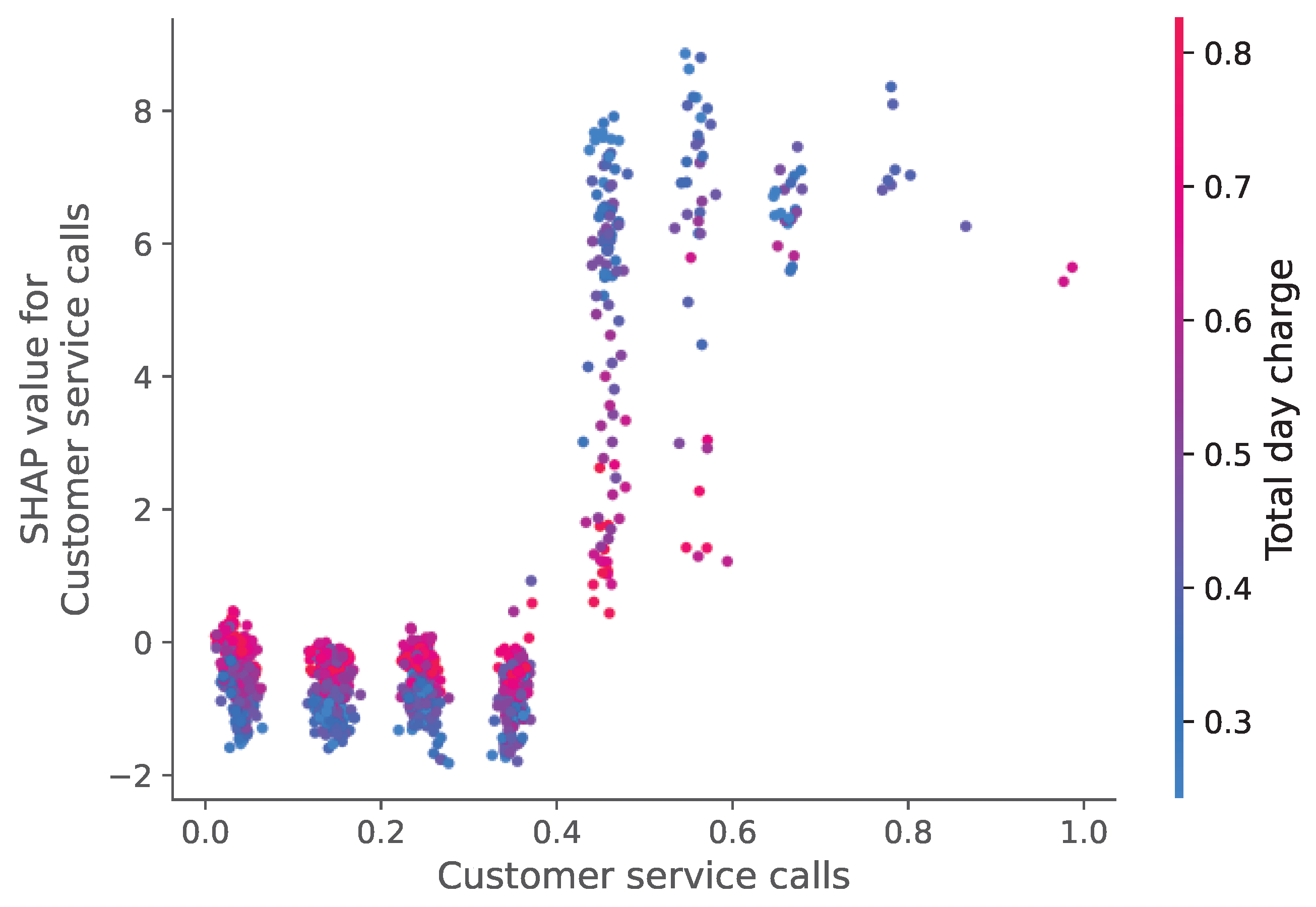
| Dataset | Non-Churn (%) | Churn (%) |
|---|---|---|
| Insurance | 88.30 | 11.70 |
| ISP | 59.64 | 40.36 |
| Telecom | 85.51 | 14.49 |
| Model | Accuracy (%) | Recall (%) | Precision (%) | F1-Score (%) | ROC AUC (%) | PR-AUC (%) | Specificity (%) | Kappa Score |
|---|---|---|---|---|---|---|---|---|
| Insurance Churn Dataset | ||||||||
| XGBoost | 93.12 | 93.12 | 93.33 | 93.11 | 93.09 | - | 89.55 | 0.86 |
| CNN | 95.19 | 95.19 | 95.45 | 95.18 | 95.16 | - | 91.33 | 0.90 |
| Ensemble Deep Learning | 95.96 | 95.96 | 96.19 | 95.95 | 95.93 | 93.54 | 92.37 | 0.92 |
| Internet Service Provider Customer Churn Dataset | ||||||||
| XGBoost | 95.36 | 95.36 | 95.53 | 95.33 | 94.48 | 97.89 | 98.98 | 0.90 |
| CNN | 93.99 | 93.99 | 94.02 | 93.96 | 93.31 | - | 96.75 | 0.87 |
| Ensemble Deep Learning | 94.63 | 94.63 | 94.76 | 94.59 | 93.75 | - | 98.26 | 0.89 |
| Telecom Churn Dataset | ||||||||
| XGBoost | 98.42 | 98.42 | 98.42 | 98.42 | 98.43 | - | 98.43 | 0.97 |
| CNN | 98.42 | 98.42 | 98.44 | 98.42 | 98.43 | 99.36 | 97.56 | 0.97 |
| Ensemble Deep Learning | 98.25 | 98.25 | 98.26 | 98.25 | 98.25 | - | 97.39 | 0.97 |
| Dataset | Model | Cost (USD) | Gain (USD) | Net Benefit (USD) |
|---|---|---|---|---|
| Insurance | Ensemble Deep Learning | 22,650 | 3,002,000 | 2,979,350 |
| ISP | XGBoost | 3050 | 1,822,500 | 1,819,450 |
| Telecom | 1D-CNN | 700 | 281,000 | 280,300 |
| Model | Insurance | ISP | Telecom | |||
|---|---|---|---|---|---|---|
| Accuracy (%) | Loss | Accuracy (%) | Loss | Accuracy (%) | Loss | |
| XGBoost | 93.12 | – | 95.36 | – | 98.42 | – |
| CNN | 95.19 | 0.150 | 93.99 | 0.180 | 98.42 | 0.120 |
| Ensemble Deep Learning | 95.96 | 0.130 | 94.63 | 0.160 | 98.25 | 0.110 |
| Attention-based Deep Learning | 85.15 | 0.3529 | 93.46 | 0.2072 | 89.21 | 0.2846 |
| Model | Insurance | ISP | Telecom | |||
|---|---|---|---|---|---|---|
| Train (s) | Infer (ms) | Train (s) | Infer (ms) | Train (s) | Infer (ms) | |
| XGBoost | 120 | 0.05 | 100 | 0.04 | 15 | 0.03 |
| CNN | 600 | 0.20 | 500 | 0.18 | 80 | 0.15 |
| Ensemble Deep Learning | 900 | 0.35 | 750 | 0.32 | 120 | 0.28 |
Disclaimer/Publisher’s Note: The statements, opinions and data contained in all publications are solely those of the individual author(s) and contributor(s) and not of MDPI and/or the editor(s). MDPI and/or the editor(s) disclaim responsibility for any injury to people or property resulting from any ideas, methods, instructions or products referred to in the content. |
© 2025 by the authors. Licensee MDPI, Basel, Switzerland. This article is an open access article distributed under the terms and conditions of the Creative Commons Attribution (CC BY) license (https://creativecommons.org/licenses/by/4.0/).
Share and Cite
AbdelAziz, N.M.; Bekheet, M.; Salah, A.; El-Saber, N.; AbdelMoneim, W.T. A Comprehensive Evaluation of Machine Learning and Deep Learning Models for Churn Prediction. Information 2025, 16, 537. https://doi.org/10.3390/info16070537
AbdelAziz NM, Bekheet M, Salah A, El-Saber N, AbdelMoneim WT. A Comprehensive Evaluation of Machine Learning and Deep Learning Models for Churn Prediction. Information. 2025; 16(7):537. https://doi.org/10.3390/info16070537
Chicago/Turabian StyleAbdelAziz, Nabil M., Mostafa Bekheet, Ahmad Salah, Nissreen El-Saber, and Wafaa T. AbdelMoneim. 2025. "A Comprehensive Evaluation of Machine Learning and Deep Learning Models for Churn Prediction" Information 16, no. 7: 537. https://doi.org/10.3390/info16070537
APA StyleAbdelAziz, N. M., Bekheet, M., Salah, A., El-Saber, N., & AbdelMoneim, W. T. (2025). A Comprehensive Evaluation of Machine Learning and Deep Learning Models for Churn Prediction. Information, 16(7), 537. https://doi.org/10.3390/info16070537









